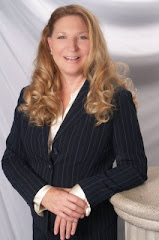
At 2 a.m. Sunday, Nov. 1, time falls back an hour throughout the U.S. -- except in Hawaii and most of Arizona.(Oct. 29) -- The hour we gain each fall is upon us. Whether you delight in the bonus or lament the loss of evening light, have you considered that you're joining an event along with nearly everyone else in America, practically in unison? The thought would normally strike us as profound if the time switch weren't so mundane. Take a look at the numbers. We've got 307.8 million people in the U.S., according to a Census Bureau estimate. The only states that don't observe daylight saving time are Hawaii and Arizona, although the Navajo reservation in Arizona does make the change. That means for about 300.2 million of us -- or 97.5 percent of the population -- we're changing our clocks back to standard time this weekend. And over just a few hours, if you count all the time zones. To compare, a mere 95 million in the U.S. watched this year's Super Bowl. Opening presents Christmas morning? Well, 93 percent of Americans say they celebrate Christmas, according to a USA Today/Gallup poll taken last year.
Sure, you've got the recluse living in a forest cabin, marking the day by sunrise and sunset only. And others who don't track time or comprehend its passage as society sees it. But they'd have to exist in great numbers to make Christmas higher than the time change on the participation scale.And we all breathe and experience day or night at the same time. But these are natural events, not man-made ones. You may also argue that events like the Super Bowl and Christmas are more interesting because they're voluntary, whereas the time change is less so if you want to participate in mainstream society. ("It's 3 p.m., you say? I say it isn't!") Does that make the mass switchover any less awe-inspiring? It's remarkable on the coordination scale alone.
Sure, you've got the recluse living in a forest cabin, marking the day by sunrise and sunset only. And others who don't track time or comprehend its passage as society sees it. But they'd have to exist in great numbers to make Christmas higher than the time change on the participation scale.And we all breathe and experience day or night at the same time. But these are natural events, not man-made ones. You may also argue that events like the Super Bowl and Christmas are more interesting because they're voluntary, whereas the time change is less so if you want to participate in mainstream society. ("It's 3 p.m., you say? I say it isn't!") Does that make the mass switchover any less awe-inspiring? It's remarkable on the coordination scale alone.
And don't forget that for most of us, at 2 a.m. Sunday, Nov. 1, the time jumps back to 1 a.m.
Information obtained from AOL: Claire Robinson


